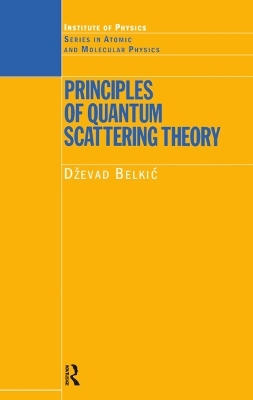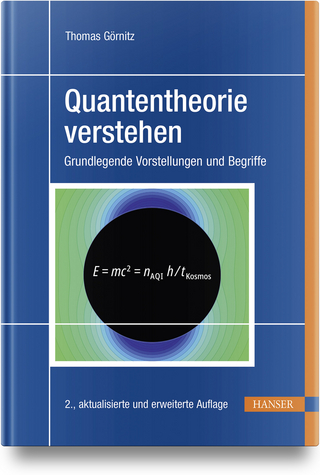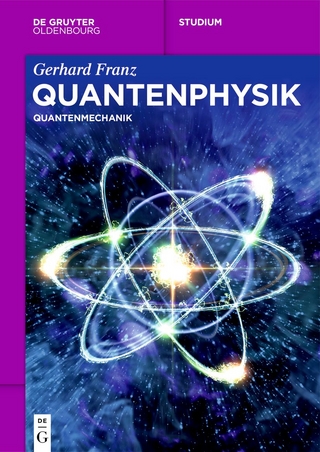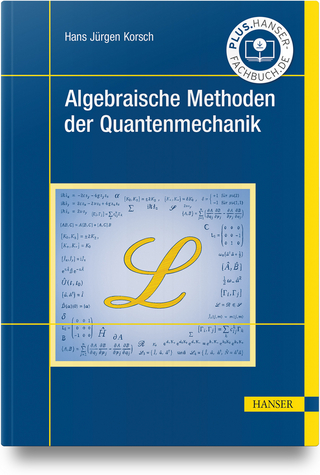
Principles of Quantum Scattering Theory
Institute of Physics Publishing (Verlag)
978-0-7503-0496-2 (ISBN)
Scattering is one of the most powerful methods used to study the structure of matter, and many of the most important breakthroughs in physics have been made by means of scattering. Nearly a century has passed since the first investigations in this field, and the work undertaken since then has resulted in a rich literature encompassing both experimental and theoretical results.
In scattering, one customarily studies collisions among nuclear, sub-nuclear, atomic or molecular particles, and as these are intrinsically quantum systems, it is logical that quantum mechanics is used as the basis for modern scattering theory. In Principles of Quantum Scattering Theory, the author judiciously combines physical intuition and mathematical rigour to present various selected principles of quantum scattering theory. As always in physics, experiment should be used to ultimately validate physical and mathematical modelling, and the author presents a number of exemplary illustrations, comparing theoretical and experimental cross sections in a selection of major inelastic ion-atom collisions at high non-relativistic energies.
Quantum scattering theory, one of the most beautiful theories in physics, is also very rich in mathematics. Principles of Quantum Scattering Theory is intended primarily for graduate physics students, but also for non-specialist physicists for whom the clarity of exposition should aid comprehension of these mathematical complexities.
Dževad Belki? is a theoretical physicist. He is Professor of Mathematical Radiation Physics at Karolinska Institute in Stockholm, Sweden. His current research activities are in atomic collision physics, radiation physics, radiobiology, magnetic resonance physics and mathematical physics. In atomic collision physics, he has worked on many problems including major challenges such as the theory of charge exchange and ionization at high non-relativistic energies. Inter alia he used distorted wave methods, paying special attention to treatments with correct boundary conditions for scattering particles which interact through Coulomb potentials., In radiation physics, Professor Belki? has worked on the passage of fast electrons and multiply charged ions through tissue as needed in radiation therapy in medicine. Here he has employed both deterministic methods through the Boltzmann equation and stochastic simulations via Monte Carlo computations. In radiobiology, he has worked on mathematical modelling for cell survival, and has focused on mechanistic modelling by including the main pathways for survival of cells under irradiation during radiotherapy., In magnetic resonance physics, Professor Belki? has worked on nuclear magnetic resonance in medicine where he focused on high-resolution parametric signal processors which go beyond the conventional shape estimations of spectra. In mathematical physics, he has worked on many problems including the derivation of analytical expressions for scattering integrals or bound-free form factors, for rational response functions in signal processing, for coupling parameters in the nearest neighbour approximation which is one of the most frequently used methods in physics and chemistry, etc., He has published more than 150 scientific publications which have received over 2000 citations. He has received a number of international awards including the triple Nobel grantee status for research grants in atomic collision theory from the Royal Swedish Academy of Sciences as approved by the Nobel Committee for Physics.
PART I; The main principles and the basic theoretical frameworks for a nonrelativistic quantum-mechanical theory of scattering; A Introduction; B The main physical features of collision problems; B.1 Recognizable reference points of scattering theory; C Universality of the scattering problem; C.1 Fundamental aspects of collision theory; C.2 Collisions in various branches of physics; C.3 Importance of collisions in atomic and molecular physics; C.4 Collisions and new sources of energy; C.5 Application of collisional phenomena in other sciences; C.6 Application of collision phenomena in technology; 1 The key features of quantum systems and the Kato conditions; 2 Time evolution of quantum systems; 3 The Schrodinger picture; 4 The Heisenberg picture; 5 The Dirac picture; 6 The Dyson perturbation expansion of the evolution operator; 7 Time-dependent scattering theory; 8 Time-independent scattering theory; 9 The problem of asymptotic convergence of scattering states; 10 The principle of detailed balance; 11 Convergence of series of operators, state vectors and matrix elements; 12 Recapitulation of the principles of quantum scattering theory; 13 Summary to part I; PART II Selected applications of non-relativistic quantum scattering theory to energetic inelastic collisions of ions with atoms; 14 The physics of double scatterings; 15 The leading experimental methods for double scatterings; 16 The two main theoretical frameworks for ion-atom collisions from low to high energies; 17 Basic mechanisms behind elementary atomic processes; 18 Direct momentum matching; 19 Indirect momentum matching; 20 Dynamic electron correlations; 21 Thomas double scatterings of the active electron with two atomic nuclei; 22 The impulse hypothesis; 23 Drawbacks of the continuum distorted wave method and its; 'derivatives'; 24 Coulomb-Born-type methods for electron detachment; 25 A variational unification of low- and high-energy methods; 26 Thomas-like dielectronic scatterings in transfer ionizatio
| Erscheint lt. Verlag | 1.12.2003 |
|---|---|
| Reihe/Serie | Series in Atomic Molecular Physics |
| Verlagsort | London |
| Sprache | englisch |
| Maße | 156 x 234 mm |
| Gewicht | 1750 g |
| Themenwelt | Naturwissenschaften ► Physik / Astronomie ► Quantenphysik |
| ISBN-10 | 0-7503-0496-0 / 0750304960 |
| ISBN-13 | 978-0-7503-0496-2 / 9780750304962 |
| Zustand | Neuware |
| Haben Sie eine Frage zum Produkt? |
aus dem Bereich


